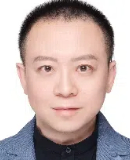Solid-state Ion Battery
At present, most of the conventional electrode materials (active materials) are in powder form, in manufacture that electrodes from the powder material, conductive agents and binders such as PVDF need to be added, the binder is mainly used to bond and maintain the active material, stabilize the electrode sheet structure, and enhance the contact between the active material and the conductive agent and current collector. However, the non-conductive binder increases the electrode resistance and is not conducive to lithium ion transport, Therefore, in various electronic and electric equipment applications, the preparation of adhesive-free film electrodes has become an inevitable trend. The electrode material prepared by a chemical method is a powder material, which must be mixed with a conductive agent and a binder and then coated on a current collector to produce an electrode. Although the preparation cost is quite low, the yield of good products is too low because of too many uncontrollable conditions. The thin film deposition method can directly deposit the electrode material on the current collector to form thin film electrode, the preparation process is simple and does not need to mix conductive agent and binder, and the yield of good products is greatly improved. Based on the safety survey, all-solid-state battery has become an inevitable trend in the future.
Topics of interest:
1. Solid film anode material
2. Solid film cathode material
3. Solid electrolyte material
4. Process design of solid state ion battery
Information about the session chair

Hsu-Sheng Tsai
Born September 1983, Taipei, Taiwan Province, 2015 he graduated from the Department of Materials Science and Engineering, Tsinghua University, Taiwan. In 2018, he was a guest researcher at the Institute of Ion Beam Physics and Materials, Helmholtz Research Center, Germany. Award-winning Humboldt Examination (Taiwan average -1-2 years), 2019 in October of, he was employed as a prospective researcher in the Institute of Space Environment and Material Science, and has been awarded as a doctoral supervisor in condensed matter physics in June of 2020, and transferred to the School of Physics in November of 2024. A total of 55 SCI papers (32 first or corresponding authors) have been published, with an H factor of 18, and 1 invention patent for China, 1 invention patent for Taiwan and 1 invention patent for the United States has been granted. The cost of hosting the project is about $2 million.